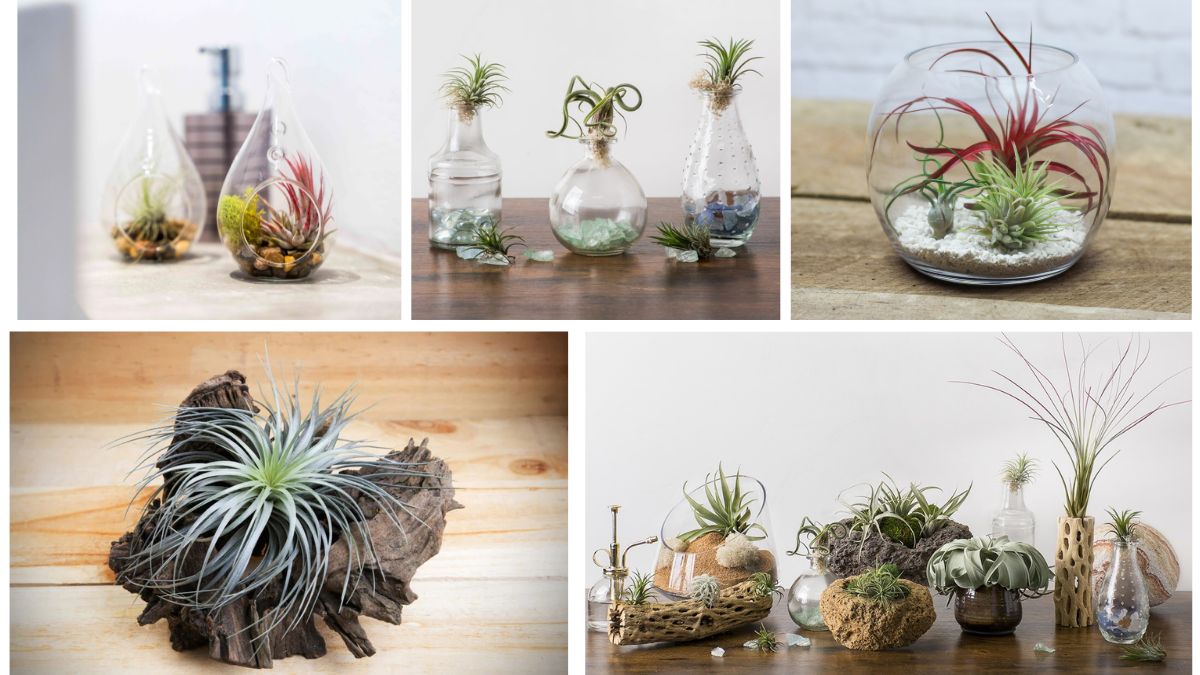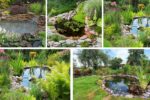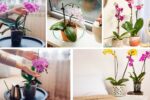Indoor gardening has taken on a whole new level of creativity with the rise of air plants, scientifically known as Tillandsia. Unlike most plants that require soil to grow, air plants absorb nutrients and moisture through their leaves, making them highly versatile for indoor décor. Their sculptural shapes, low-maintenance needs, and adaptability allow them to thrive in almost any space. From hanging terrariums and driftwood displays to modern glass globes, these remarkable plants bring an artistic and natural touch to home design.
If you’re looking for ways to add elegance and greenery to your living space without the fuss of traditional plants, air plants are the perfect choice. In this article, we’ll explore five unique air plants that can elevate your indoor décor, along with tips on how to care for them and display them beautifully.
Why Choose Air Plants for Indoor Décor?
Before diving into the unique varieties, let’s understand why air plants are an ideal addition to any home:
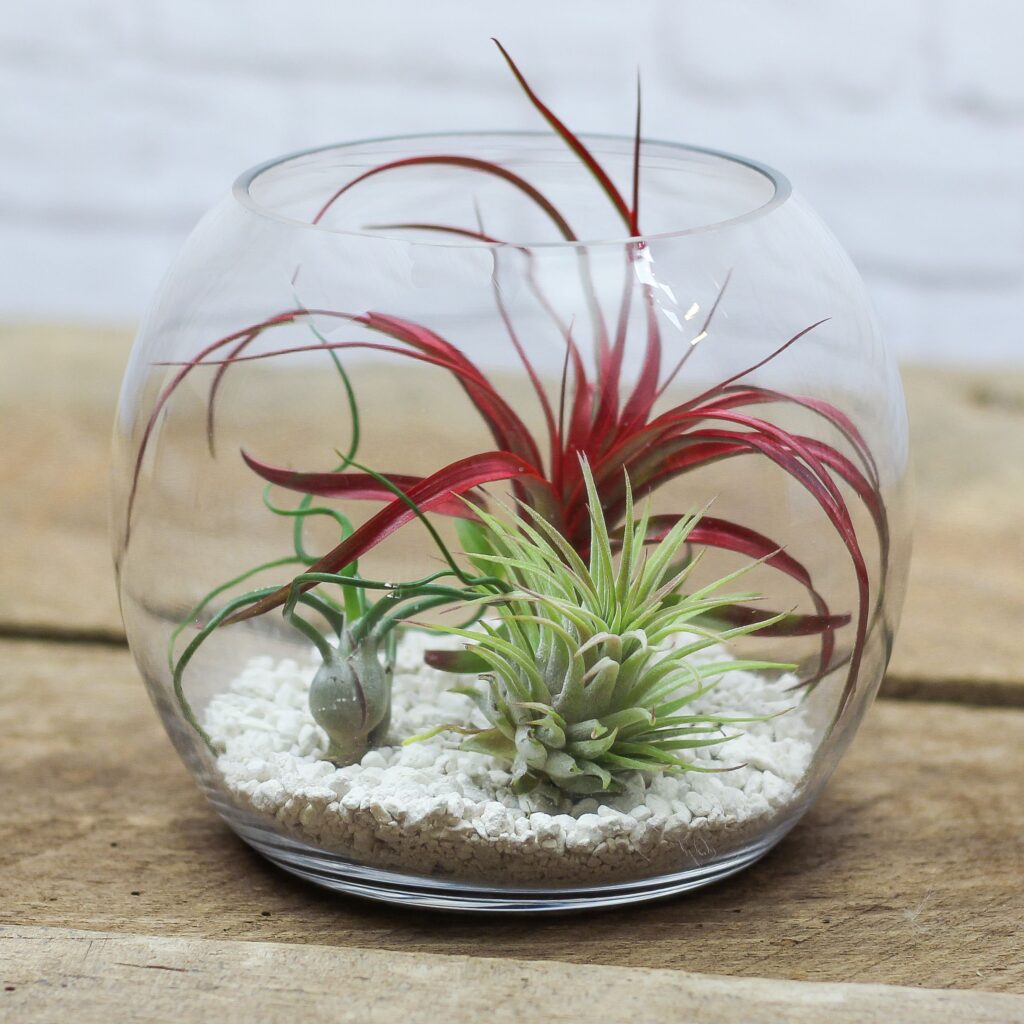
- Soil-free Growth: Air plants don’t require soil, making them cleaner and easier to incorporate into creative displays.
- Compact and Lightweight: Perfect for small apartments, shelves, or hanging designs.
- Artistic Shapes: Their curly leaves, silvery hues, and striking blooms make them look like living sculptures.
- Low Maintenance: With simple misting or soaking, they thrive without much effort.
- Versatile Placement: They can be displayed in terrariums, mounted on wood, hung in glass globes, or simply placed on a tabletop.
Now, let’s explore five unique air plants that can transform your space into a modern indoor oasis.
1. Tillandsia Xerographica – The Queen of Air Plants
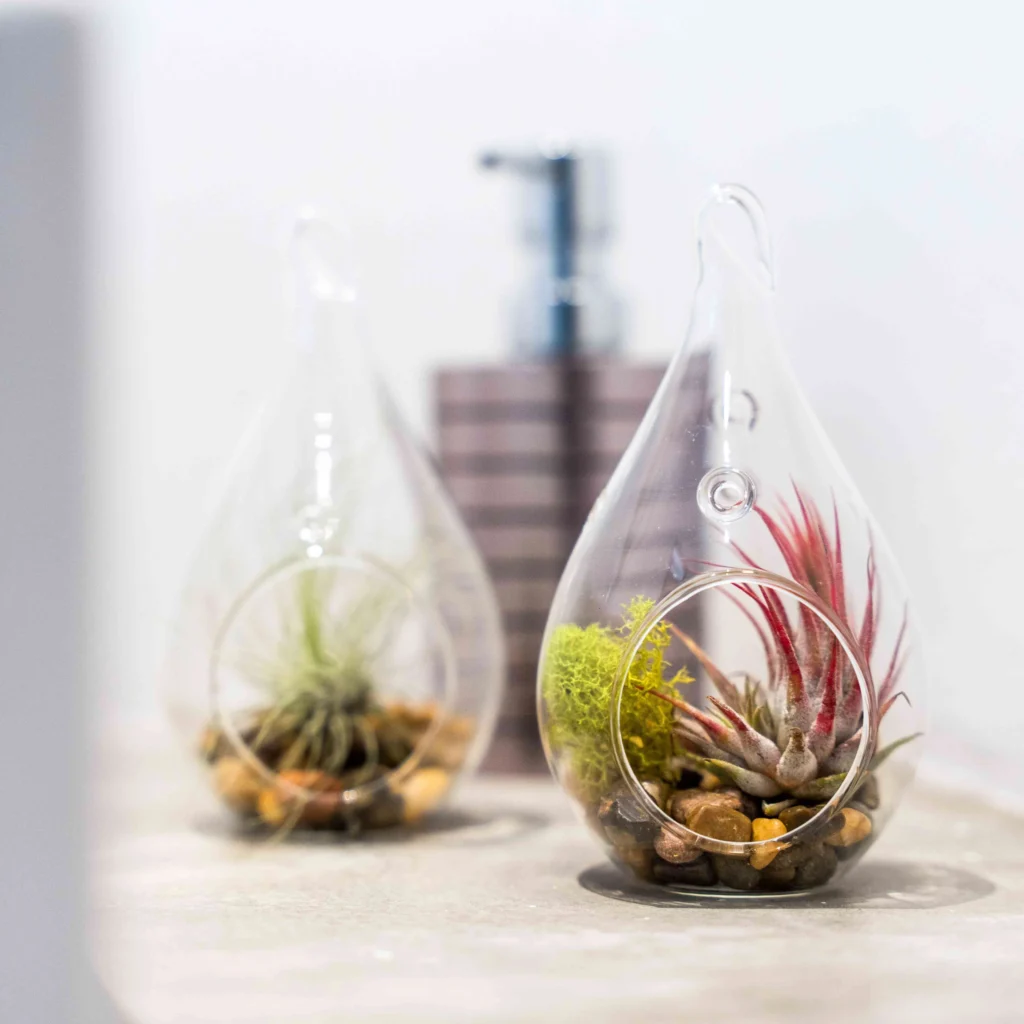
Known as the “queen” of air plants, Tillandsia xerographica is one of the most striking varieties available. Its large, silvery-green leaves curl gracefully into rosettes, resembling a decorative centerpiece. Because of its size and sculptural form, it makes a bold statement in any room.
Décor Ideas:
- Display it as a tabletop centerpiece in a shallow bowl or decorative tray.
- Hang it in a geometric metal holder for a modern minimalist look.
- Place it on a wooden stand to highlight its dramatic curves.
Care Tips:
- Needs bright, indirect sunlight.
- Soak in water for 20–30 minutes every two weeks, allowing it to dry upside down.
- Requires good air circulation to prevent rot.
This plant is ideal for those who want one standout piece to elevate their indoor design.
2. Tillandsia Ionantha – The Color-Changing Beauty
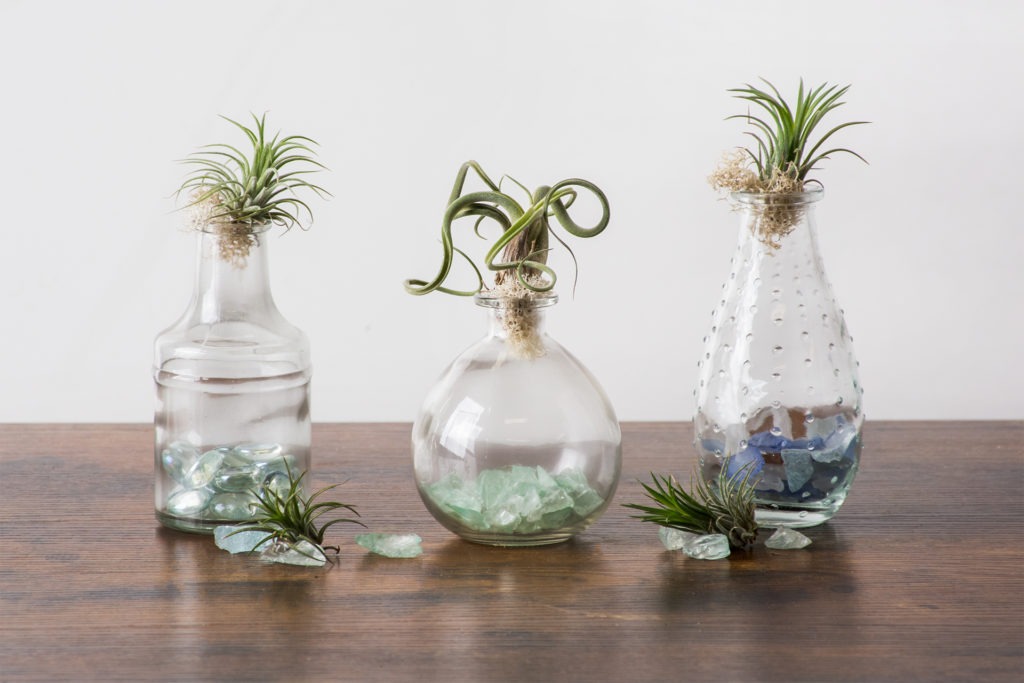
If you want a small but vibrant air plant, Tillandsia ionantha is an excellent choice. This plant is famous for its color-changing leaves that shift from green to bright red or pink when it’s about to bloom. It produces striking purple flowers, making it a true showstopper.
Décor Ideas:
- Perfect for glass terrariums filled with pebbles or sand.
- Can be mounted on driftwood or cork for a natural, rustic effect.
- Arrange in a mini wall garden with multiple ionanthas to create a living art piece.
Care Tips:
- Prefers bright, filtered light.
- Mist lightly 2–3 times a week.
- Water more often in dry climates, but always let it dry thoroughly.
Its compact size makes it suitable for desks, shelves, or any small corner needing a splash of greenery.
3. Tillandsia Bulbosa – The Alien-Looking Wonder
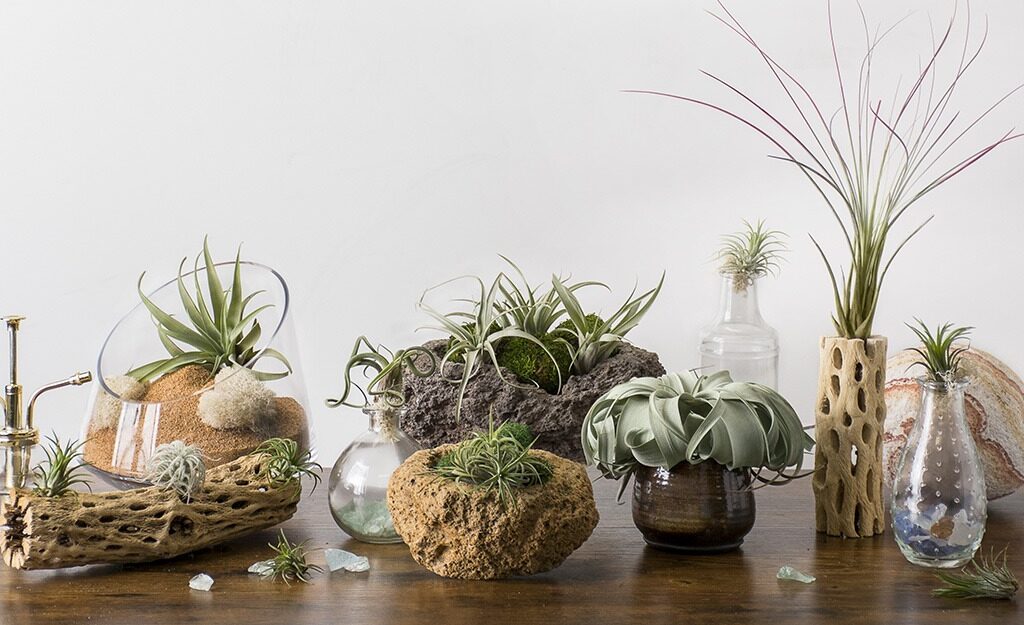
Tillandsia bulbosa is one of the most unique air plants, often described as having a surreal, alien-like form. Its bulbous base sends out long, twisting green leaves that can take on a purplish hue. The unusual shape makes it a favorite for artistic displays.
Décor Ideas:
- Mount on driftwood or shells for a natural, ocean-inspired look.
- Use in hanging terrariums where its twisted leaves can spill out dramatically.
- Combine with other air plants for a sculptural arrangement.
Care Tips:
- Thrives in humid environments, making it perfect for kitchens and bathrooms.
- Requires weekly soaking or frequent misting.
- Loves bright but indirect sunlight.
This variety not only enhances décor but also sparks conversation due to its otherworldly appearance.
4. Tillandsia Capitata Peach – The Soft and Elegant Beauty
For a soft and elegant aesthetic, Tillandsia capitata peach is a perfect choice. Its wide, smooth leaves often display beautiful peach or pink tones, especially when exposed to bright light. During its bloom cycle, it produces lavender or purple flowers, enhancing its charm.
Décor Ideas:
- Place in a ceramic bowl or tray for a minimalist display.
- Pair with white stones or crystals to highlight its pastel colors.
- Use as a bedside décor piece for a calming touch.
Care Tips:
- Needs medium to bright indirect light.
- Water by soaking once a week, letting it dry completely.
- Prefers slightly warmer temperatures and moderate humidity.
This plant’s soft, pastel hues make it an excellent addition to modern and cozy indoor designs.
5. Tillandsia Tectorum – The Snowy Air Plant
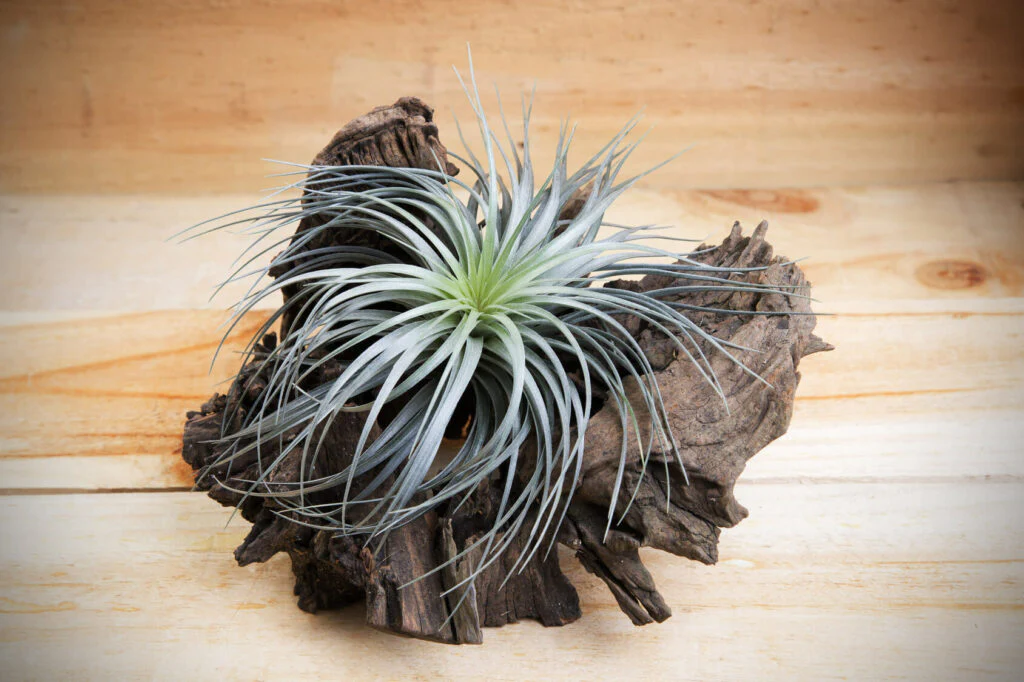
One of the most delicate and enchanting air plants, Tillandsia tectorum is covered in fine, fuzzy trichomes that give it a soft, snowy appearance. Unlike most air plants, it thrives in drier conditions and needs less frequent watering.
Décor Ideas:
- Stunning when placed in hanging glass globes for a floating effect.
- Beautiful when paired with driftwood or stone displays.
- Ideal for window sills or hanging installations where natural light enhances its silvery tones.
Care Tips:
- Needs bright light, including some direct sunlight.
- Mist lightly once a week or less, depending on humidity levels.
- Avoid frequent soaking, as it prefers drier conditions.
Its delicate, frosty look adds elegance and uniqueness to any indoor décor theme.
General Care Tips for All Air Plants
While each air plant has unique needs, here are general guidelines to keep them thriving:
- Light: Bright, indirect sunlight is best. A south- or east-facing window works well.
- Water: Soak once every 1–2 weeks, or mist several times a week depending on humidity. Always allow the plant to dry completely.
- Air Circulation: Good airflow prevents rot and keeps plants healthy.
- Temperature: Keep between 50–90°F (10–32°C). Avoid freezing or excessive heat.
- Fertilizing: Use a diluted bromeliad or air plant fertilizer once a month for better growth and blooming.
Creative Display Ideas for Air Plants
Part of the magic of air plants lies in how you display them. Here are a few creative ideas:
- Hanging Globes: Create floating gardens with glass globes.
- Wall Frames: Mount air plants on wooden or metal frames for living wall art.
- Driftwood Displays: Attach plants to driftwood for a natural, beach-inspired look.
- Mini Terrariums: Pair them with sand, stones, or crystals for a decorative touch.
- Tabletop Bowls: Use shallow bowls filled with decorative rocks for a modern centerpiece.
Conclusion
Air plants are more than just low-maintenance greenery—they are living art forms that elevate indoor décor with their unique shapes, textures, and colors. From the dramatic Tillandsia xerographica to the snowy Tillandsia tectorum, these five air plants can transform any room into a stylish, refreshing, and modern space.
With minimal care and endless design possibilities, air plants are perfect for beginners, plant enthusiasts, and interior decorators alike. Whether displayed in hanging globes, mounted on driftwood, or arranged in terrariums, they add elegance and a natural touch to any home.
By choosing these five unique air plants, you’re not just adding greenery—you’re introducing creativity, style, and beauty into your indoor living environment.
